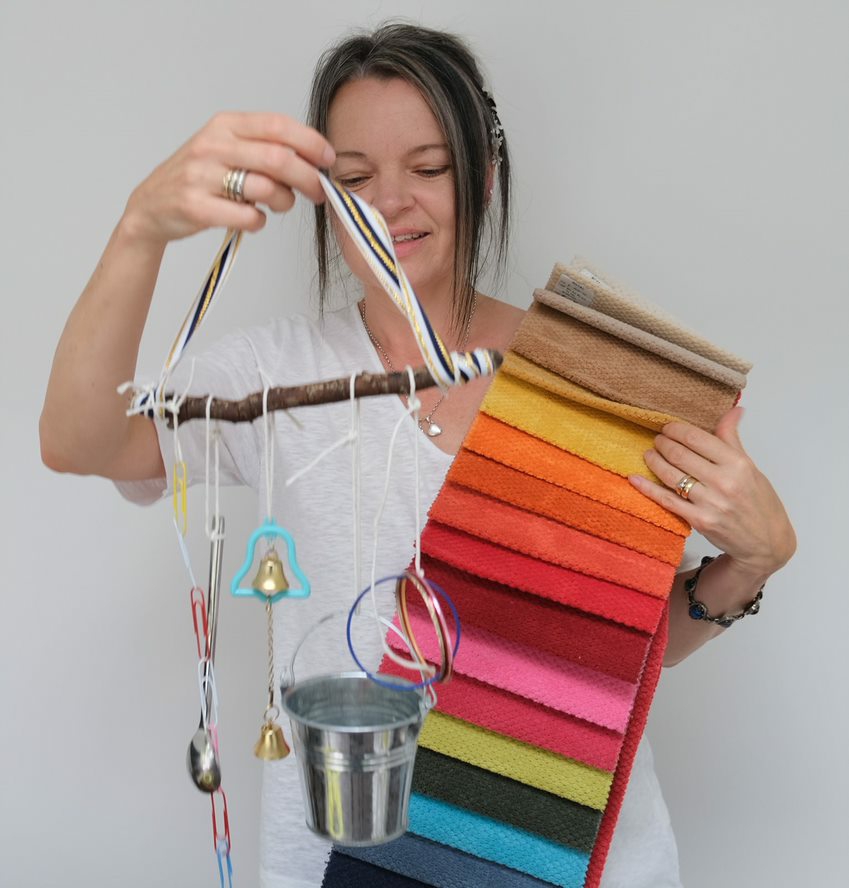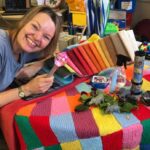My name is Victoria Navin and I am the founder of www.rhymingmultisensorystories@outlook.com
I am passionate about writing multisensory stories and teaching resources to connect individuals to literacy, culture, history, and topic through the senses.
What is a Multisensory Story?
A multisensory story is an immersive, inclusive, and engaging form of storytelling that engages the senses by incorporating a wide range of experiences using elements of sound, touch, smell, taste and visual stimulation through sensory stimuli (story props).
Who are Multisensory Stories for?
Multisensory stories appeal to a wide audience of people of all ages and abilities from young children, through to adults, who benefit from accessing an alternative to traditional storytelling due to sensory impairments or learning disabilities. They can be used in educational settings to support learning and the curriculum, as therapeutic interventions or for pleasure.
A Personalized Experience
As the stories are experience through the senses, this enables a more personalized experience for a person who may have a visual impairment, the use of tactile objects, scents or sounds enhances understanding and enables the story explorer to become the author of their own story. The stories are a useful tool to promote speech and communication as the props back up the spoken word.
How do I source my Story Props?
The story props enhance the story experience stimulating multiple senses, sight, sound, touch, taste, and smell are all low budget, everyday items found around the home, garden, and outdoor area.
You can also make or add your own props.
Why ‘Rhyming’ Multisensory Stories?
The combination of sensory stimuli, listening to the rhyme and rhythm and the repetitive structure of the stories, supports memory and aids learning, playing a crucial role in the development of early communication language skills.
What Are the Benefits of Multisensory Storytelling?
Stories create a bond between the storyteller and the story explorer enhancing and enriching experiences.
The stories connect the individual to literature, culture, history, and topic in a fun, engaging and motivating way.
They form an excellent base on which to scaffold learning, providing opportunities for the individuals to work towards personal learning goals and targets
The stories and activities within the stories are designed to promote:
- Initiation and sensory exploration.
- Communication skills: eye contact, listening, anticipation shared attention and language development.
- Self-confidence & well-being: trying out new ideas and skills, practicing self-care, independence and enjoying achievement.
- Self-awareness: asking for ‘help’, ‘again’ and ‘more’.
- Opportunities to explore cause and effect and to build anticipation skills.
- Physical Development: fine & gross motor skills.
- Understanding of the environment and the world around us.
- Engagement in scientific experimentation and mathematical concepts.
- Development of social skills: if working in a group, individuals will need to practice their turn-taking and sharing skills, to wait, to listen to others’ ideas
- Development of emotional skills, resilience and persistence. The stimulation of the senses evoke emotional responses, e.g., smells are closely linked to memory, further connecting the individual to the story.
Can Multisensory Storytelling Promote Alternative Communication Skills?
Sensory stories are an excellent motivating tool for encouraging alternative communication systems, early communication skills, Makaton, sign language and to facilitate PECS exchanges. The stories build the confidence of students with speech impediments and communication difficulties as they have a physical (story) prop to support the words they are saying.
Can Multisensory Stories Inform on Needs & Care Plans?
The sensory stimuli (story props) are a tool for the individual to explore and express their likes, dislikes and sensory preferences providing opportunities to make choices.
Observing reactions to a range of sensory stimuli enables you to build a picture of sensory preferences that can be used to identify motivators, items to items calm an individual when anxious, tired or stressed and to identify triggers.
You may seek to avoid some triggers and to work on building tolerance on others that may be necessary
(e.g. teeth brushing) through sensory exploration in a safe and therapeutic environment.
When used in a safe setting rhyming multisensory stories can be used to prepare the story explorer for visits out of their daily routine such as getting a haircut or the dentist.
This sensory record can help parents, carers and teaching staff make informed choices to enhance daily life in areas such as diet, sensory needs, daily activities, and leisure activities and is an invaluable tool to inform on the behavior strategies and the writing of care plans.
How Do I Tell a Multisensory Story?
The multisensory stories are written as easy to follow, step-by-step guides.
Click here for more information.
Remember!
- You do not have to complete the whole story in one sitting. You can explore one or two sentences adding to the story in future sessions, it may take several sessions to complete the story.
- Allow processing time.
- Repetition is the key! Repeat the same story for a minimum of twice a week for a month then change to a different story.
- Be allergy aware! Like any other activity, ensure the activities are supervised by a responsible adult.
- The interactions should be led by the story explorer who should be allowed to participate without expectation.
- Never force stimuli and stop the activity if the story explorer shows signs that they are not enjoying the session.
- Focus on having fun and it will become an educational experience!
Where Can I Find Stories and Resources?
Head to the Rhyming Multisensory Stories Teachers Trading Store where you will find a selection of fully resourced, step-by-step multisensory stories to download for free and to purchase.
Want to see it in action? You can find free walkthroughs of stories here
Anything Else I Need to Know?
I write a free, monthly, teaching calendar packed with ideas and activities linking to the month for sensory learners of all ages!
Get in Touch
Your questions, queries, comments, and feedback are always welcome.
email: rhymingmultisensorystories@outlook.com
website: www.rhymingmultisensorystories.com




